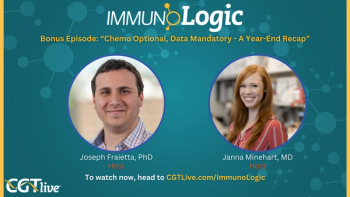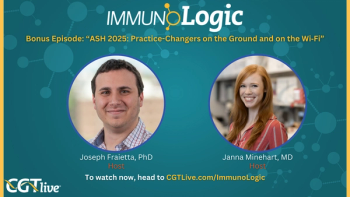
Despite the Long History of Gene Therapy Research, Crossing the Blood-Brain Barrier Remains a Challenge
Deborah Phippard, PhD, the chief scientific officer of Precision for Medicine, discussed the history and current state of gene therapy research for neurological indications.
Despite the fact that the first adeno-associated virus (AAV) vector-based gene therapy was not
In an interview with CGTLive™, Deborah Phippard, PhD, the chief scientific officer of Precision for Medicine, discussed the history of gene therapy and the current state of gene therapy research in
CGTLive: Can you give some background info on the history of gene therapy?
Deborah Phippard, PhD: The history of gene therapy is a long and winding road, and I'm sure many people listening will be very familiar. It's pretty shocking to think about that we first got proof-of-concept for gene therapy back in the 1960s when we proved we could put DNA into a mammalian cell and see an effect. Clearly, we've gone through many iterations since then. I think a lot of that is around different vectors, whether we will go ex vivo or in vivo, and a whole evolution from retrovirus through lentivirus through AAVs. There's always pros and cons. I think retroviruses were a great proof-of-concept. They're somewhat in the rearview mirror, now, when you think about the challenges of insertional mutagenesis and the fact that you need actively dividing cells to use the retrovirus. They were fantastic in the late 90s and early 2000s for proof-of-concept, but when I think about gene therapy now, I really think about ex vivo and using a lentivirus to transduce the cell versus AAV and going in vivo.
When it comes to neurological indications, what is the current state of gene therapy research today?
There's more than 1,500 clinical studies that have been done for gene therapy at this point in time... A substantial number of those are for the CNS. I would say the biggest issues we have with the CNS is crossing the blood-brain barrier and getting effective delivery. There's different ways of thinking about how we would do that and what's been tried in the past. That is, delivery methods: the multiple ways of going directly into the CNS surgically and all the intendant problems that come with that versus using an AAV with a tropism that allows it to affect the CNS and then thinking about just how much infection do you get and how much transduction and expression of the gene do you get? I say we're a long way from solving this. I think the gene therapies for single-gene, lysosomal storage disorders have been a great proof of concept. I think everybody reading this is very much interested in the big disorders, such as Parkinson disease and Alzheimer disease. How are we going to simplify what we have in terms of therapy and make it more broadly available to the patient population? Something that really fascinated me when was I was talking to a client recently was that you can consider obesity a metabolic disorder or even a CNS disorder, thinking about all the hormones that are involved in that disorder. Now I see companies are even thinking about obesity as a target for gene therapy.
[Gene therapy has] a long, varied history that has been going for more than 80 years now. Year by year, I see more and more innovations in gene therapy in terms of the design and the delivery and just thinking about how you can pack a gene into AAV vectors. Of course, everybody knows, you can only put 4.7 kb into an AAV vector. People are making pseudo genes that have the blunt end: what is really needed to fix the disorder. Looking at all those different research strings that are being worked on right now, it's such a dynamic field. I could literally talk for an hour about the history of gene therapy and where we're going for all those different paradigms that we're researching at this point in time.”
Transcript edited for clarity.
REFERENCE
FDA approves novel gene therapy to treat patients with a rare form of inherited vision loss. News release. FDA. December 18, 2017. Accessed September 28, 2023. https://www.fda.gov/news-events/press-announcements/fda-approves-novel-gene-therapy-treat-patients-rare-form-inherited-vision-loss
Newsletter
Stay at the forefront of cutting-edge science with CGT—your direct line to expert insights, breakthrough data, and real-time coverage of the latest advancements in cell and gene therapy.





































